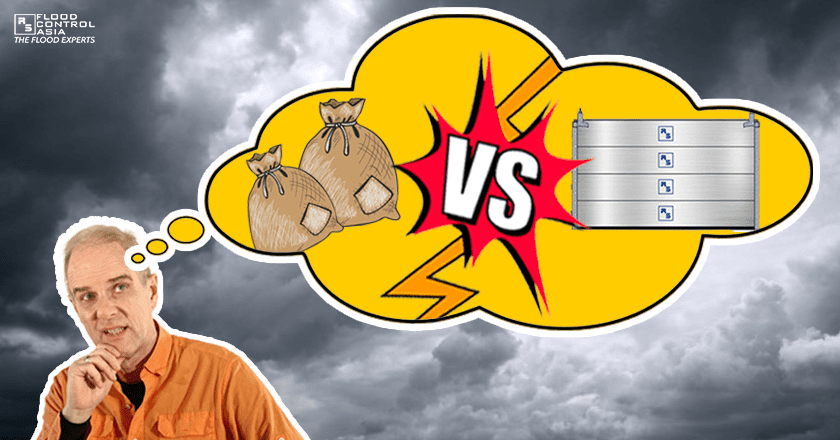How Greenland’s Rapid Defrosting Affects Worldwide Flooding?
September 19, 2020 | Created by: Andreas Klippe | Comments

The Greenland Ice Sheet is big and old. It’s the world’s largest island, lying in the North Atlantic Ocean and is known for its vast tundra and immense glaciers. In fact, according to the UNESCO World Heritage Site, the Ilulissat Icefjord of Greenland is the most productive glacier in the Northern Hemisphere.
Now, the effects of Climate Change threaten the Greenland Ice Sheet. The world’s temperatures both hot and cold are moving to the extremes. Typhoons, hurricanes, and thunderstorms are getting stronger and lasting longer leading to floods that cause greater destruction.
Another notable effect that aggravates the situation is the formation of lakes over Greenland’s Glaciers. It looks like it is a self-sufficient process. Since the climate is from equilibrium, this imbalance is accelerating itself.
Even with world leaders’ extensive strategies to stop it, climate change continues to wreak disaster.
In this blog, let’s take a look at the Greenland Ice Sheet as we cross the point of no return for climate change.
Point of No Return for Greenland
The United States’ National Oceanic and Atmospheric Administration credits the rise of global sea levels to two major causes. One is the expansion of oceans due to heat; second, is the melting of land-based ice like glaciers and sheets.
Presently, the Greenland Ice Sheets have an average thickness of 5,000 feet or 1,524 meters. Areas not covered in ice are about 410,500 square meters or just the size of Norway. In these isolated places, where most people live, the “Greenlanders” make their living mostly on fish exportations.
In a perfect world, we would prefer it to stay that way. However, NASA has indicated that Greenland’s Ice Sheet already lost a total of 3.8 trillion tons of ice where you can fill 120 million Olympic-size swimming pools, due to the rapid melting of Greenland glaciers.
To give you an idea about its scale:
“If Greenland’s glaciers all melt, it would raise global sea levels by 7.4 meters or 24 feet.”
With this, you can imagine how your home would look like if the sea continued to rise.

Researchers from Ohio State University led by Michaelea King conducted a similar study on Greenland’s glaciers. According to their findings, the snow gained through accumulation and ice melted or calved from glaciers were enough to keep the ice sheet intact throughout the 1980s and 90s.
Intact, but not sustain. The snowfall that replenishes the ice sheet of Greenland cannot keep up with the rate the glaciers are melting. Through those decades, the ice sheets lost about 450 billion tons of ice each year from flowing outlet glaciers.
The melting of Greenland’s glaciers will be felt on the opposite side of the world. The United Nations Intergovernmental Panel on Climate Change (IPCC) predicts that:
“Southeast Asian countries will be highly affected by worldwide flooding. Bangkok, Ho Chi Minh City, Jakarta, Manila, and Singapore, in Southeast Asia, as well as the islands of Tuvalu, Kiribati, and Marshall in the Pacific Islands, could be underwater by 2050 if sea-level continues to rise.”
The question now is what we can do. Is it too late to do anything?
We’re Way Past the Tipping Point
The number of scientists who say that we are past the tipping point grows each day. There will be serious consequences. The most unfortunate of all is that our children and the next generation will also have to carry this burden.
Unpredictable.
Terrifying.
Devastating.
We will see more of these words in the future as we learn to deal with climate change.
But still, the action we take today could make a huge difference tomorrow. We must prepare now and protect ourselves the best way we can.

Let us take advantage of the modern Flood Protection Technology we have to protect our schools, hospitals, businesses, and most of all, our homes.
“Act now: Join environment awareness programs, reduce your carbon footprints, and learn how to be safe in the face of climate change.”
Sometimes, it’s best to listen to the experts. If I can do it, you can also do it. Sometimes it is really easier to make small changes in our daily lives.
Don’t let flooding problems get in the way of your life. Whether it’s for your business, home, or properties, always invest in high-quality flood protection systems. Don’t waste time waiting for answers. Find the answers now before climate change finds you.
Sign up for the RS newsletter now if you haven’t already ;).
Stay safe and flood free!






